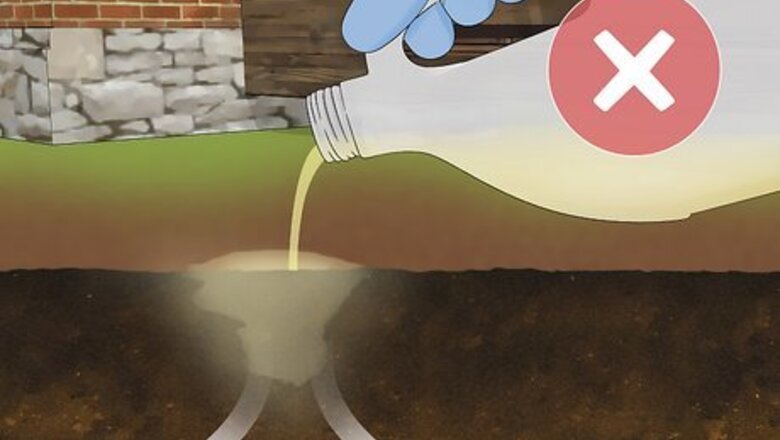
views
- Dilute muriatic acid by pouring ¼ cup (59.15 mL) into 2 gallons (7.6 L) of water; then pour it down the drain if city regulations allow it.
- Neutralize 1 gallon (3.8 L) of acid by mixing in 5.5 pounds (2.49 kg) of baking soda, then pour it down the drain.
- Use leftover muriatic acid to clean brick, concrete, toilets, and tile. Or, use it to balance your pool’s pH.
- Give leftover muriatic acid to a local hazardous waste facility; they will dispose of it for you. Don't pour muriatic acid outside or down a storm drain.
Can I pour muriatic acid outside or down a drain?
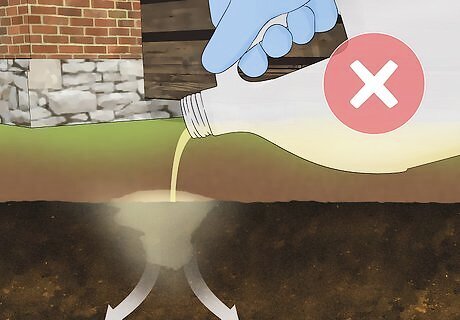
No, you can't pour muriatic acid outside. Doing so would kill plants and harm the soil, and the acid could leach into groundwater. Dumping muriatic acid down a storm drain harms the ecosystem because this untreated water feeds into local rivers and streams. It's illegal to dispose of hazardous waste this way. Don't pour muriatic acid down a kitchen or sink drain without first diluting it or neutralizing it, either.Dispose of Muriatic Acid Step 1Bullet1.jpg
Diluting Muriatic Acid
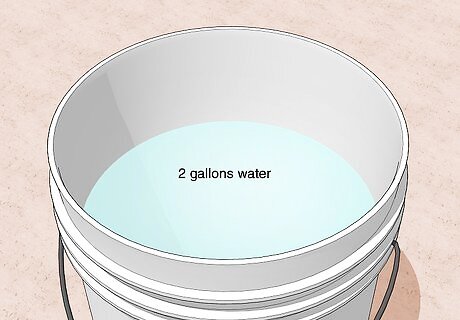
Fill an acid-resistant bucket with 2 gallons (7.6 L) of water. Make sure the bucket is made of HDPE, LDPE, or PTFE plastic (muriatic acid will melt ABS and PP plastic). To determine the plastic type, flip over your bucket and check the bottom. It will likely have the abbreviation below the recycle symbol.
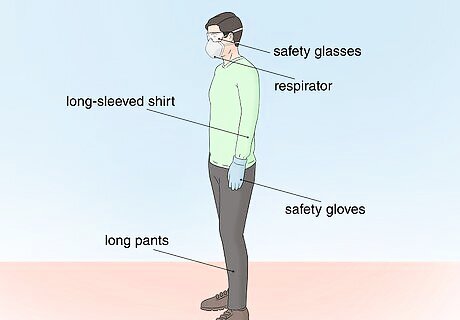
Put on personal protective gear. This includes safety goggles, acid-resistant gloves, a long-sleeved shirt, and long pants. Wear a respirator and/or work in a well-ventilated area. Muriatic acid is very corrosive and will burn your skin. The fumes can cause respiratory irritation. Always wear the proper safety gear while using muriatic acid.

Carefully pour ¼ cup (59.15 mL) of acid into the water. Always add acid to water; never add water to acid. If you get it backward, an explosive exothermic reaction will occur! Pouring undiluted muriatic acid down the drain can ruin your pipes.
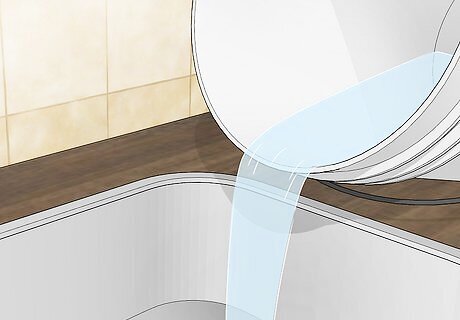
Slowly pour the solution down the sink. Flush the solution out of your pipes by running the water for several minutes. Review your city's wastewater regulations to make sure they don't prohibit disposing of diluted muriatic acid in this way. Search for “waste management,” “sewer,” or “wastewater” on your city’s website for more information. Don’t use this method if you have a private septic tank, as it destroys helpful bacteria. Only use it if you’re connected to the city’s sewage system.
Neutralizing Muriatic Acid
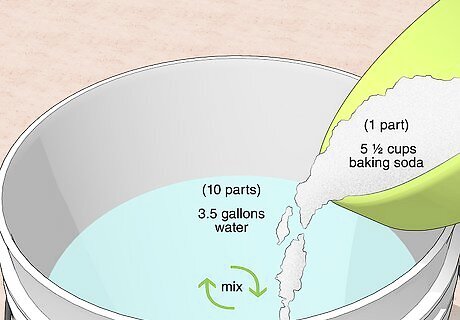
Mix 1 part baking soda to 10 parts water. This equals about 5 ½ cups (1.21 kg) of baking soda per 3.5 gallons (13 L) of water. Do this in a large, acid-resistant bucket and stir with a wooden stick. Only use a bucket made of HDPE, LDPE, or PTFE plastic. ABS and PP plastics can’t hold corrosive acids. Identify the plastic type of your container by examining the bottom for the abbreviation above the recycling symbol.
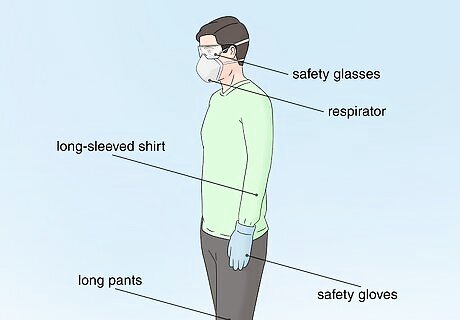
Wear safety gear. Goggles, acid-resistant gloves, a long-sleeved shirt, and long pants will protect you from splashes. Put on a respirator and/or work in a well-ventilated area.
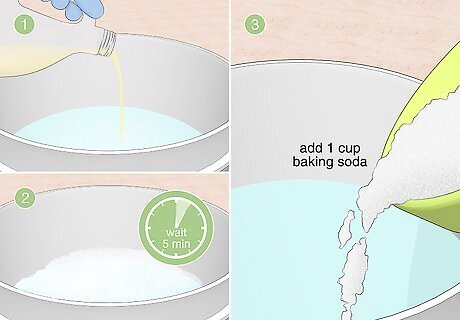
Slowly add the muriatic acid. Wait about 5 minutes for the solution to stop fizzing. Then, add another cup (220.8 g) of baking soda. If it fizzes, wait for it to stop, then add additional baking soda.

Keep adding baking soda until no fizzing occurs. Once the fizzing stops, the solution is neutralized.
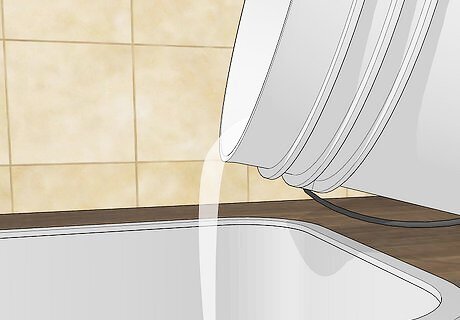
Pour the solution down the drain. If you use a city sewer system, the neutralized mixture is safe to pour down the drain. Don’t use this method if you have a private septic tank, as it destroys helpful bacteria. Only use this method to get rid small amounts of muriatic acid, as it requires about 5.5 pounds (2.49 kg) of baking soda for every 1 gallon (3.8 L) of acid.
Using Up Leftover Muriatic Acid
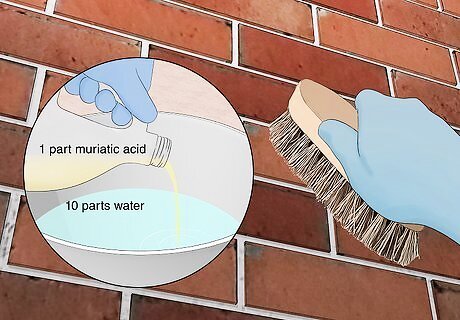
Remove build-up on brick. Put on your safety gear, then fill an acid-resistant bucket with 10 parts water before adding 1 part muriatic acid. Apply the solution to the brick and allow it to sit for a few minutes before scrubbing with a stiff nylon brush. Then rinse the surface with a 1:16 solution of ammonia to water. Appropriate safety gear includes goggles, acid-resistant gloves, a long-sleeved shirt, and long pants.
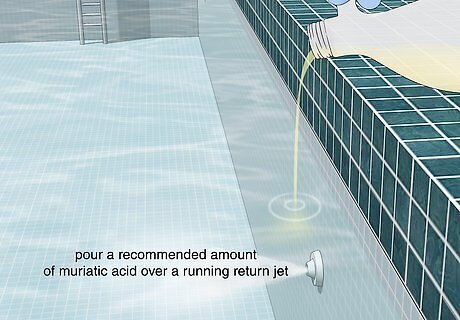
Balance your pool’s pH. If the water has too much chlorine, you can lower the pH with muriatic acid. Put on your safety gear, then follow the instructions on the container to determine how much to add. Slowly pour it over a running return jet, then test the pH after 4 hours. When working with muriatic acid, wear goggles, acid-resistant gloves, a long-sleeved shirt, and long pants. Maintain a pH level between 7.2 and 7.8.Dispose of Muriatic Acid Step 12Bullet2.jpg After adding the muriatic acid, wait at least 4 hours before swimming.Dispose of Muriatic Acid Step 12Bullet3.jpg
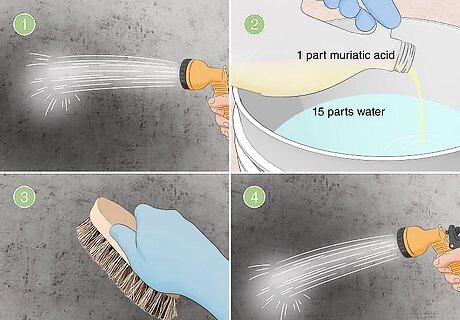
Eliminate concrete stains. Start by rinsing off the concrete with a hose. Put on your safety gear, then create a 15:1 mixture of water to muriatic acid in an acid-resistant bucket. Apply to the stain using a sturdy scrub brush, then rinse the concrete using a pressure washer or hose. Protect yourself from splashes by wearing goggles, acid-resistant gloves, a long-sleeved shirt, and long pants.
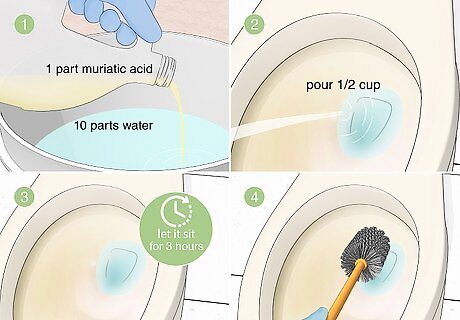
Get rid of limescale in toilets. Fill an acid-resistant bucket with 10 parts water, then carefully add 1 part muriatic acid while wearing the appropriate safety gear. Pour ½ cup (118.29 mL) into the toilet bowl, then allow it to sit for up to 3 hours. Scrub with a toilet brush and flush. Wear goggles, acid-resistant gloves, a long-sleeved shirt, and long pants. Put on a respirator and/or work in a well-ventilated area.
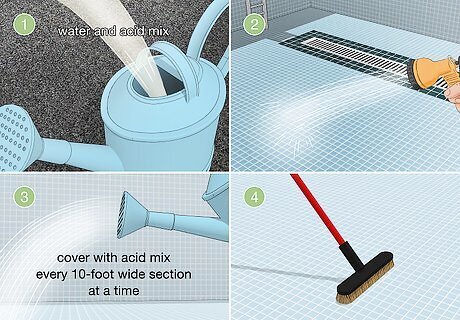
Clean your empty swimming pool. Put on protective gear and pour 1 gallon (3.8 liters) of water into an acid-resistant watering can, then add 1 gallon (3.8 liters) of water. Wet the pool walls with a hose, then pour the acid solution on a 10-foot wide (3.05 m) section at a time. After 30 seconds, scrub with a brush. Acid-washing your pool removes stubborn scale buildup. Proper protective gear includes goggles, acid-resistant gloves, a long-sleeved shirt, and long pants. Use this method on a swimming pool with concrete walls; it isn't suitable for vinyl pool liners.
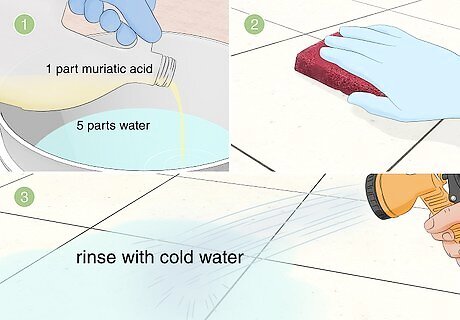
Remove soap scum from glazed and ceramic tile. After putting on safety gear, fill an acid-resistant bucket with 5 parts water, then slowly add 1 part muriatic acid. Use a nylon scouring pad to apply the solution, scrubbing the tiles in a circular motion. Rinse with cold water. Protect yourself by wearing goggles, acid-resistant gloves, a long-sleeved shirt, and long pants. Put on a respirator and/or work in a well-ventilated area. Muriatic acid will damage marble, limestone, travertine, and onyx tile.
Can I throw away or recycle muriatic acid?
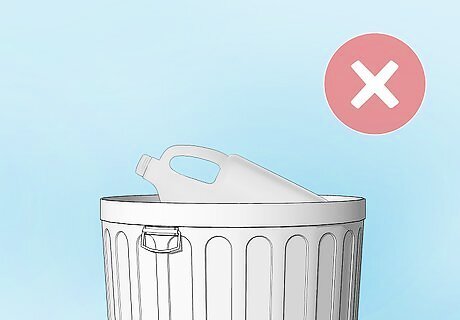
No, you can't throw leftover muriatic acid in the garbage. It puts sanitation workers at risk and can contaminate groundwater at landfills. Instead, take it to a hazardous waste facility. Some recycling centers also accept hazardous household waste; call or visit their website to find out which products they accept. To find a hazardous waste drop-off location, check your city or county website and search for “household hazardous waste.” Many cities also schedule a few days each year when sanitation workers will pick up hazardous waste.
How do I store muriatic acid?
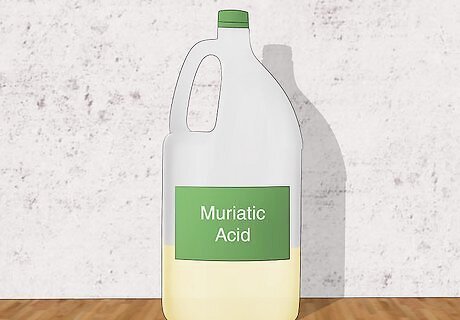
Leave muriatic acid in its original container. Make sure it’s properly labeled and sealed. Keep the container upright in a dry, well-ventilated spot that's out of reach of children.




















Comments
0 comment